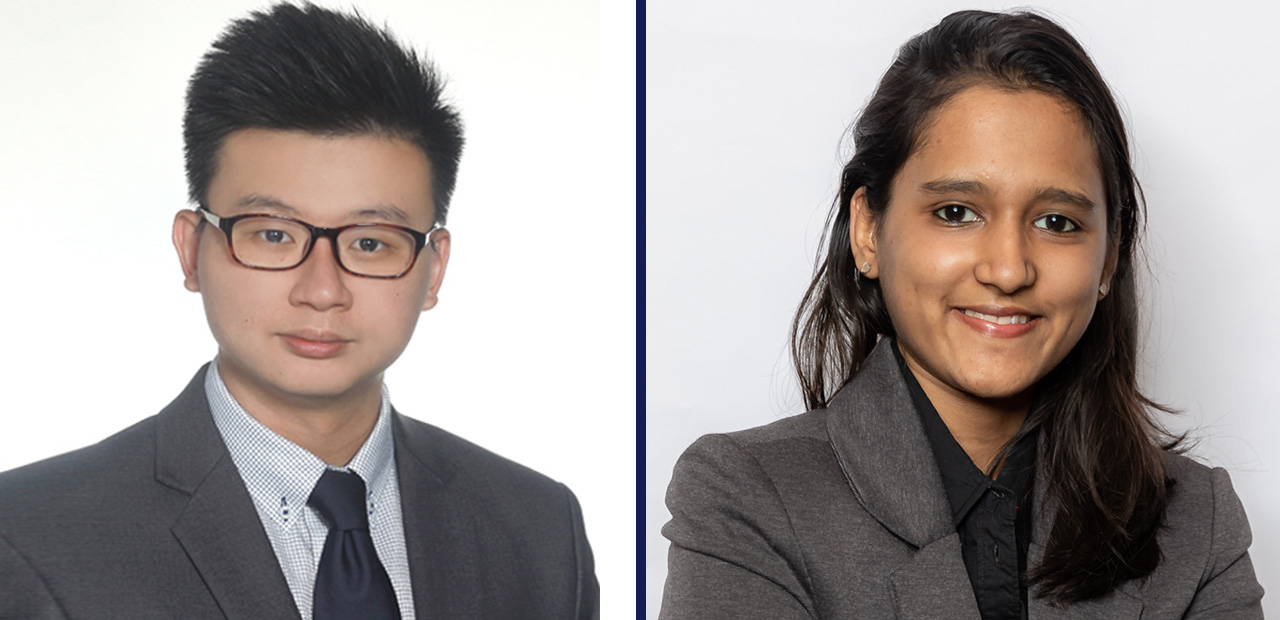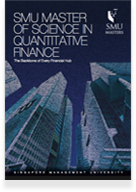
If numbers are your friends, you might have a bright future in the number-crunching world of financial investment and banking. Quants (also known as quantitative analysts or quantitative traders) are a special breed of finance professionals skilled in using mathematical models to capitalise on market opportunities.
If you think that describes you to a T, then the Master of Science in Quantitative Finance (MQF) programme at SMU might just be what you need to elevate your game. The master’s programme provides students with a pathway to equip them with knowledge from pricing and hedging, risk analytics and management, as well as quantitative trading and investment to help them stay on top of the game.
Notably, the postgraduate course focuses on hands-on application through various project works that give students many opportunities to put theory into practice, as real-world application is essentially the main theme of the MQF curriculum. Besides a prestigious degree, graduates can showcase their projects to potential employers to demonstrate their competencies. And rather than inundate students with abstract mathematical concepts, the MQF programme employs these applied research projects to enhance the learning experience. In doing so, students are equipped with the “meta skills” of learning how to identify and fill in their own knowledge gap, and to translate theoretical concepts into something concrete and applicable.
We speak to two MQF graduates from SMU’s Lee Kong Chian School of Business — Woon Tian Yong, who is currently a Senior Data and Quantitative Solutions Specialist at Informa Global Markets, and Varisha More, a Quantitative Developer at East India Securities, on their thoughts about the programme, knowledge gleaned and how the exposure to designing and implementing quantitative trading strategies have helped them secure jobs in the financial sector.
Multiple projects for a multitude of real-world applications
Critical appreciation of computational methods and mathematical theories can only be achieved through actual quantitative applications in the finance sector. As such, every module in the MQF programme includes a project component. The projects are designed to be as realistic as possible in consultation with industry practitioners, so these exercises are not solely theoretical, but rather initiatives akin to the realistic problems students are expected to handle in the workplace.
“The projects given in the first four semesters were already structured by the professors. In the fifth semester though, we had the liberty to choose our own projects for two of our modules” Varisha explains.
All projects involve numerical analysis and writing computer codes to implement the models learnt in the MQF curriculum, which has the additional advantage of reinforcing their learning by experiencing how these models perform.
But perhaps one of the biggest challenges all MQF students will face during project work is finding the right “strategy-asset class pairing” because the strategy and results must be successfully translated into a real-world setting. The initial planning stage was always the hardest, recalls Tian Yong.
“We had to sieve through a sea of publications and ideas that seemed promising at the outset, only to be disappointed later when we realised that the results were either not replicable or tradeable in a real-world setting or simply that the profits from the strategy have already decayed or have been traded away,” he adds.
The most memorable project, according to Varisha, was assigned by Quantitative Strategies’ professor Dr Benjamin Ee: The class was tasked to come up with their own trading strategies, which had to be not only profitable but also feasible in the real world. The group of five spent two weeks on the project, and Varisha says it was “the smoothest project” she had worked on during her course, thanks to her entire team being focused on their project outcome and what they hoped to achieve, as well as her teammate who was working in that field. And while the rest of the group had little knowledge on the topic, her teammate was able to help them understand his idea and concept, resulting in the project idea being profitable and providing a lot of scope for any High-Frequency Trader (HFT).
From seminars to capital markets
Besides in-class presentations, MQF students are also sometimes required to present their projects to both senior industry professionals and faculty members. Having external parties evaluate and comment on the projects help students to gain a more practical perspective on the impact of their efforts. These senior managers include both adjunct faculty as well as their colleagues whom they invite to join in the presentation, including professionals in senior positions from well-known financial institutions such as OCBC, DBS, UOB, GIC and the SGX.
Combining both the hard skills of technical knowledge and application with soft skills of teamwork and presentation capabilities, the MQF programme, therefore, propels graduates towards their varied career advancement goals.
Tian Yong, for example, shares that his current role involves mining in-house data and analytical sources to create reports presenting a unique insight into emerging financial trends, which involves the use of complex modelling and visualisation techniques.
“The vast array of statistical, analytical and programming skills acquired and honed over the course of the SMU MQF programme was used specifically during a quantitative trading project I was assigned. My experience put me in a very strong position to attain my current role with my current company,” he adds.
In addition, Tian Yong reveals that the skillset learnt during the programme has been a useful base upon which he built new competencies at work. He explains: “These ideas have been implemented, further improved, and manifested as the IGM G10 FX Playbook, a G10 FX research and trading report, which I personally maintain on a daily basis.”
Varisha’s job, on the other hand, entails developing, testing, and monitoring new trading strategies for the stock market using historical data and statistics.
Coming from a commerce background, she had no experience in programming languages prior to entering the MQF programme, but the various project works provided her with “clarity and confidence”, equipping her for her current role. In fact, she credits a specific project work on calibrating a SABR (Stochastic Alpha Beta Rho) model — commonly used in the modelling of interest rate derivatives to fit the market’s prices, as the biggest contributor to her current role.
“The projects are the most integral part of the programme, since they helped us gain great clarity in the topics taught,” says Varisha.
“Most of our projects were related to the real market, so we mastered ways to connect our theoretical knowledge with practical scenarios. As a result, when I started working, I was ready for any surprises that the market threw my way.”
Speak to our Admissions Advisors
Lee Kong Chian School of Business
Postgraduate Admissions
Singapore Management University
Lee Kong Chian School of Business
Graduate Programmes Office, Level 4
50 Stamford Road, Singapore 178899
Tel: +65 6828 0882
Join us at the upcoming events
Singapore Management University
50 Stamford Road Singapore 178899
Singapore
